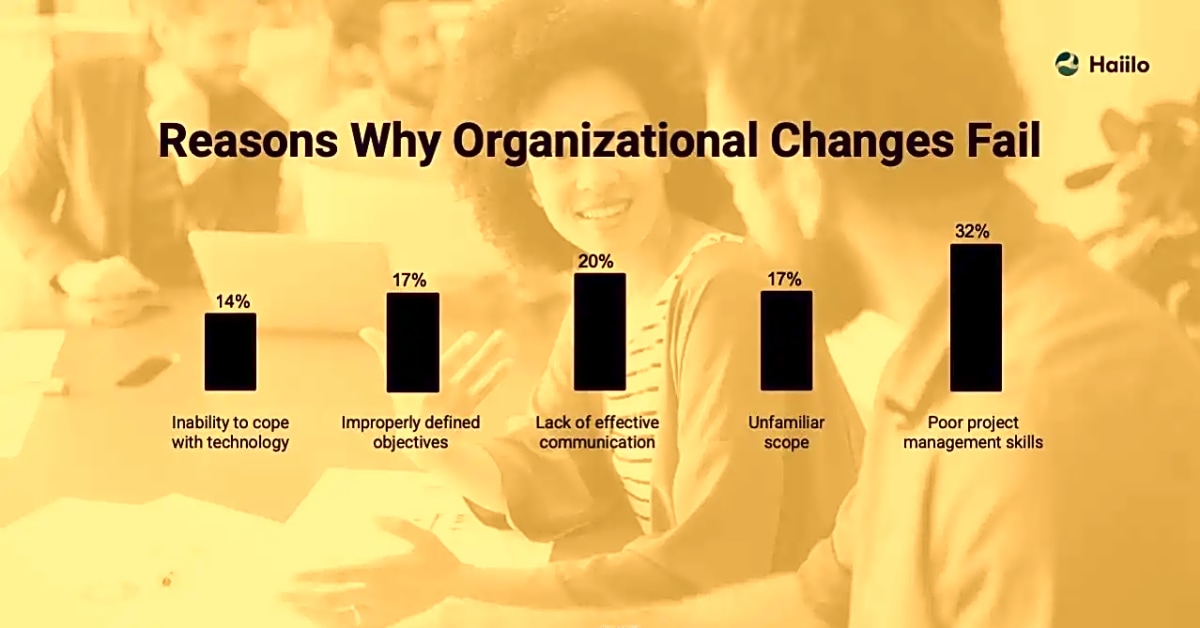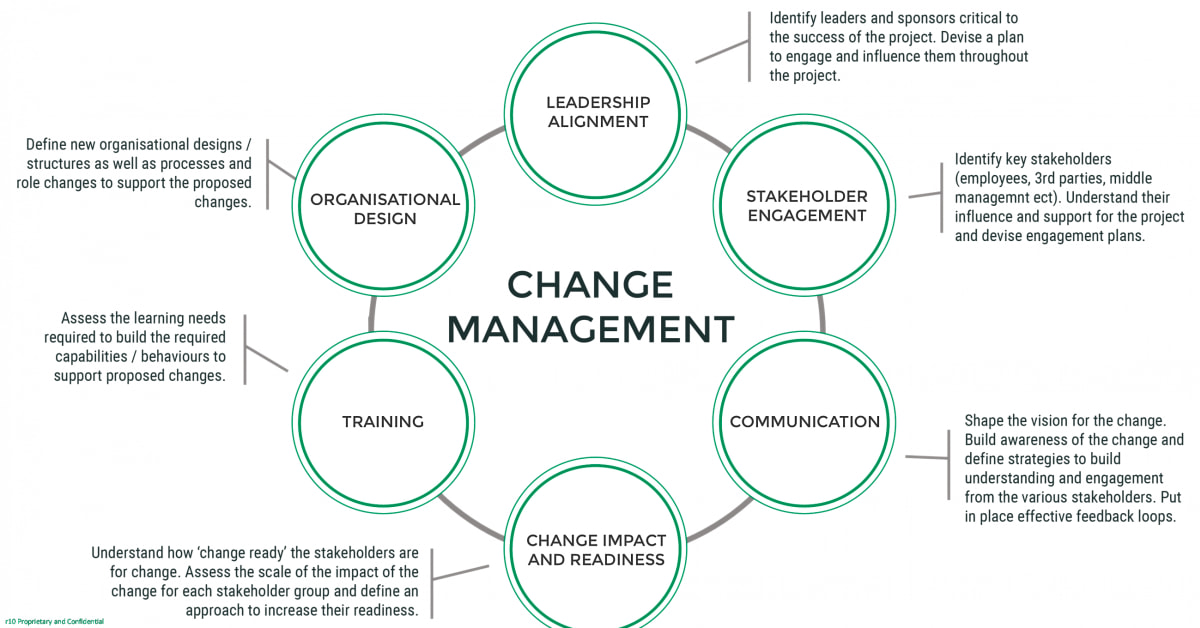Developing a communication plan is an essential aspect of implementing successful organizational change initiatives. In today’s ever-evolving business landscape, change is inevitable and necessary for growth and adaptation. However, without proper communication, even the most well-planned change initiatives can fail. This is where an effective communication plan comes into play. It serves as a roadmap for communicating important information about the change, addressing potential concerns and resistance, and ultimately guiding employees through the transition process. In this article, we will explore the key elements of a change management plan and how to develop a comprehensive communication strategy that will ensure the success of your change initiatives. So let’s dive in and discover how to effectively communicate change within your organization.
In today’s fast-paced business world, organizations must constantly adapt and evolve to stay competitive. As a result, change initiatives have become a common occurrence in the workplace. However, managing change can be a complex and daunting task, as it involves navigating through resistance, uncertainty, and potential disruptions to the current operations. This is where an effective communication plan comes into play – it serves as a roadmap to guide leaders and employees through the change process, ensuring that everyone is on the same page and working towards the same goals.
Developing a communication plan for change initiatives is crucial for the success of any organizational change. It involves a systematic approach to communicating with all stakeholders involved in the change process. This article will discuss the key elements of developing an effective communication plan for organizational change.
Defining the Purpose and Objectives
The first step in developing a communication plan is defining the purpose and objectives of the plan. This involves clearly outlining the reason for the change and what goals the organization hopes to achieve through this change. This information will serve as a guide for all communication efforts and ensure that all stakeholders are aligned with the overall vision.
Identifying Stakeholders and Their Roles
Identifying stakeholders and their roles is crucial in ensuring that all relevant parties are included in the communication plan. This includes not only employees but also customers, suppliers, and other external parties who may be affected by the change. Each stakeholder should have a clear understanding of their role in the change process and how they will be impacted.
Outlining Communication Channels and Methods
An effective communication plan should include a variety of communication channels and methods to reach different stakeholders. This may include email, company newsletters, town hall meetings, or one-on-one meetings with managers. The key is to use a combination of channels to ensure that the message is received by all stakeholders.
Establishing a Timeline
A timeline is essential in keeping the change process on track and ensuring that all stakeholders are aware of the timeline for the change. This also allows for regular communication updates and progress reports to keep everyone informed and involved.
Creating a Feedback Mechanism
A feedback mechanism is crucial in any communication plan, especially during times of change. This allows stakeholders to provide their input and address any concerns or questions they may have. It also shows that the organization values their feedback and is open to suggestions.
Tailoring the Communication Plan
It is important to tailor the communication plan to fit the specific needs of the organization and its employees. This may include addressing cultural differences or language barriers, as well as promoting inclusivity within the workplace. By understanding the unique needs of the organization, the communication plan can be tailored to ensure its effectiveness.
Tips and Techniques for Effective Communication
Effective communication during times of change requires some key techniques. These include active listening, being transparent and honest, and addressing concerns and questions proactively. It is also important to provide regular updates and reminders to keep stakeholders informed and engaged.
Real-Life Examples
To further illustrate the importance of an effective communication plan for change initiatives, let’s look at some real-life examples. Companies like Apple, Microsoft, and Toyota have all successfully implemented change initiatives in the past by developing clear and comprehensive communication plans. These plans allowed them to navigate through potential challenges and ensure that all stakeholders were on board with the changes.
Real-Life Examples
Including examples from organizations that have successfully implemented change initiatives can help readers better understand how to develop an effective communication plan.
Defining the Purpose and Objectives
Having a clear purpose and objectives for the communication plan is essential for successful change management. It serves as a guide for leaders and employees, aligning everyone towards a common goal.
Firstly, defining the purpose of the communication plan allows organizations to clearly communicate the reasons behind the change and its expected impact. This helps employees understand the need for change and reduces resistance. When employees understand the purpose, they are more likely to support and embrace the change.
Secondly, setting clear objectives for the communication plan helps to establish measurable goals. This allows organizations to track progress and determine the effectiveness of their communication efforts. It also helps leaders and employees stay focused on what needs to be achieved during the change process.
An effective communication plan should have both a clear purpose and objectives that are aligned with the overall goals of the organization. This ensures that everyone is working towards the same end result and minimizes confusion or conflicting efforts.
Creating a Timeline and Feedback Mechanism
In order to effectively communicate about change initiatives, it is crucial to establish a clear timeline for when and how information will be shared with employees. This allows for a structured approach to communication, avoiding confusion and ensuring that all employees are informed at the appropriate times.
A timeline also helps to set expectations for employees, giving them a sense of predictability and control in the midst of change. This can help to alleviate some of the uncertainty and resistance that may arise.
Additionally, creating a feedback mechanism is essential for addressing any concerns or questions that employees may have about the change. This can be in the form of regular town hall meetings, open forums, or even one-on-one conversations with managers.
Having a feedback mechanism in place shows employees that their voices are being heard and their opinions are valued. It also allows for any necessary adjustments to be made in the change process based on employee feedback.
Identifying Stakeholders and Their Roles
In any change initiative, it is crucial to involve all stakeholders in the process. This includes not only the leadership team and employees, but also customers, suppliers, and other external parties who may be impacted by the change. By involving stakeholders from the beginning, their buy-in and support can be gained, making the transition smoother and more successful.
When identifying stakeholders, it is important to consider their roles and how they may be affected by the change. This will help determine the best way to communicate with each group. For example, employees may need more detailed information about the change and how it will impact their roles, while customers may be more interested in how the change will affect their experience with the organization.
Effective communication with each stakeholder group is crucial for successful change management. This may involve using different channels such as meetings, emails, or newsletters, depending on the preferences of each group. It is also important to listen to their feedback and address any concerns they may have, as their support is essential for the success of the change initiative.
Practical Tips for Effective Communication
During times of change, effective communication is crucial for the success of any organizational change initiative. To ensure that your communication plan is as effective as possible, here are some practical tips and techniques that you can implement:
- Active Listening: One of the most important skills for effective communication is active listening. This means paying attention to what others are saying without interrupting or judging. When employees feel heard and understood, they are more likely to be receptive to change.
- Transparency and Honesty: During times of change, it is important for leaders to be transparent and honest with their employees. This builds trust and credibility, and helps employees understand the reasons behind the change.
- Address Concerns Proactively: It is natural for employees to have concerns and questions during times of change. As a leader, it is important to address these concerns proactively and provide reassurance and support. This can help alleviate any resistance or fear towards the change.
Outlining Communication Channels and Methods
In order to effectively communicate during a change initiative, it is important to utilize various communication channels and methods. These channels can include email, meetings, social media, and more. Each of these channels has its own strengths and weaknesses, and it is important to carefully consider which ones to use in order to reach different audiences.
Email is a common and effective way to communicate with employees during a change initiative. It allows for direct and private communication, making it a good choice for sensitive or confidential information. However, it can also be easily overlooked or ignored, especially if employees are already overwhelmed with emails.
Meetings, on the other hand, offer a more personal and interactive approach to communication. They allow for face-to-face interactions and the opportunity for employees to ask questions and receive immediate feedback. However, they can also be time-consuming and may not be feasible for all employees to attend.
Social media can be a great way to reach a large audience quickly. It is also a more informal and engaging platform, making it ideal for sharing updates and gathering feedback. However, it may not be suitable for all types of communication, as some employees may not have access to social media or may not be comfortable using it for work-related matters.
When choosing the most suitable communication methods for reaching different audiences, it is important to consider factors such as the type of information being shared, the size of the audience, and the level of interaction required. It may also be beneficial to use a combination of different channels in order to ensure that all employees are reached and engaged.
Tailoring the Communication Plan
In order for a communication plan to be effective in managing change initiatives, it must be tailored to fit the specific needs and culture of the organization.
First and foremost, it is important to understand the current communication practices within the organization. This includes identifying the preferred methods of communication, the communication channels that are most commonly used, and the level of transparency that exists within the company.
Once this information is gathered, the communication plan can be customized to align with these existing practices. For example, if email is the primary method of communication within the organization, then the plan should utilize email as a key channel for delivering information about the change initiative.
Additionally, it is crucial to consider the culture of the organization when developing a communication plan. Different companies have different communication styles and expectations. Some may prefer a more formal and top-down approach, while others may value open and collaborative communication. By tailoring the plan to fit the organization’s culture, it will be more likely to resonate with employees and gain their support.
Another factor to consider when customizing a communication plan is the unique needs of different departments or teams within the organization. Each team may have their own specific concerns or challenges related to the change, and it is important to address these in a targeted manner. This could involve crafting different messages for each team or providing specialized training or resources to help them adapt to the change.
Ultimately, tailoring the communication plan will help ensure that it is relevant, relatable, and effective in facilitating successful change management within the organization.
In conclusion, developing a communication plan is a crucial step in effectively managing change initiatives within an organization. A well-planned and executed communication plan can help minimize resistance, increase employee engagement, and ensure a smoother transition towards the desired outcome. By following the key elements outlined in this article, leaders can develop a comprehensive communication plan that will drive successful change management.





